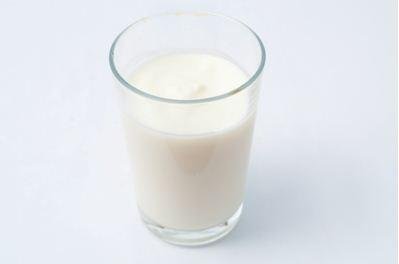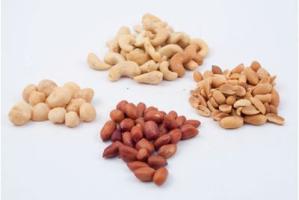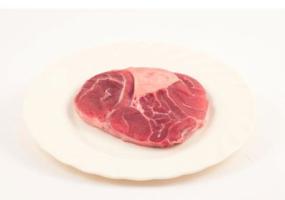Introduction
What is ariboflavinosis?
Ariboflavinosis is caused by deficiency of Vitamin B2 (riboflavin).
Certain groups of people are at a greater risk of being deficient in riboflavin. They are individuals with Kidney disease who are being treated with dialysis; individuals with absorption problems, women who are pregnant with more than one fetus, women breast feeding more than one infant, people with other vitamin deficiencies and protein energy malnutrition. In addition, chronic diseases such as cancer, heart disease and diabetes are known trigger Vitamin B12- deficiency, However, the following people are usually deficient in riboflavin and may need extra Vitamin B2 from supplements:
- Women who are pregnant or breast feeding
- Anyone with inadequate caloric or nutritional dietary intake or increased nutritional requirements (i.e when you work out regularly, is sick and not meeting the basic need)
- Athletes
- Those who drink alcohol in excess
- People who have just undergone surgery
- Those under long term excess stress
- Impaired liver function, which prevents proper utilization of the vitamin.
Symptoms of Ariboflavinosis
True roboflavin deficieny is quite rare. When riboflavin deficiency symptons do occur, they are usually related to a shortage of all the Vitamin B's. Usually, though, ribifalvin deficiency shows up as problems with mucousmebranes, skin, eyes, and blood. An early clear sign is sores and cracks on the corner of the mouth. Scaly skin, reddened eyes, and aneamia are other deficiency signs.
When you have the following synptoons, please consider to take some extra Vitamin B2 supplement pills to enrich your ribiflavin level.
Symptoms of riboflavinosis are:
- Sore lips/throat
- Redness and swelling of the mouth and throat,
- Cracking of the lips (cheilosis)
- Inflammation and cracks on the corners of the mouth (angular stomatitis)
- Tongue redness and inflammation (glossitis)
- Itching and scaling of skin particularly affecting the scrotum or vulva and skin around nose, mouth, forehead, ears,scalp and lips
- Formation of blood vessels on the cornea (clear part) of the eye
- Blood disorders such as anemia
- Eyes overly sensitive to light and easily tired
- Trembling
- Insomnia
Prevention and treatment
Treatment involves diet, high in Sources of Vitamin B2.
- Normally, people may get required riboflavin from the following, source: Beef liver, dairy products, eggs, meat, wheat germ and Tuna fish,
- The most nutrient dense sources of riboflavin are liver, mushrooms, spinach and other green leafy vegetables, broccoli, asparagus and milk products.
- Supplements can be used to increase the amount of B2 consumed, however should be only on prescription. Supplements should be prescribed or recommended by a qualified heath professional.
Exposure to light (ultraviolet radiation) causes riboflavin to breakdown rapidly. To prevent this light-induced breakdown, paper and plastic cartons-not glass- are usd in packaging riboflavin rich foods, such as milk, milk products and cereals.
Riboflavin requirements
| Life Stage | Age | Males (mg/day) | Females (mg/day) |
| Infants | 0-6 months | 0.2 | 0.2 |
| Infants | 7-12 months | 0.3 | 0.3 |
| Children | 1-3 years | 0.5 | 0.5 |
| Children | 4-8 years | 0.6 | 0.6 |
| Children | 9-13 years | 0.9 | 0.9 |
| Adolescents | 14-18 years | 1.2 | 1.0 |
| Adults | 19 years and older | 1.2 | 1.1 |
| Pregnancy | all ages | - | 1.4 |
| Breastfeeding | all ages | - | 1.4 |
Riboflavin rich foods
 |
| Milk |
|
© Biovision
|
 |
| Nuts |
|
© Biovision
|
 |
| Meat |
|
© Biovision
|
 |
| Spinach |
|
© Biovision
|
| Food | Serving | Riboflavin (mg) |
| Fortified cereal | 1 cup | 0.59 to 2.27 |
| Milk (nonfat) | 1 cup (8 ounces) | 0.34 |
| Cheddar cheese | 1 ounce | 0.11 |
| Egg (cooked) | 1 large | 0.27 |
| Almonds | 1 ounce | 0.23 |
| Salmon (cooked) | 3 ounces* | 0.12 |
| Halibut (broiled) | 3 ounces | 0.08 |
| Chicken, light meat (roasted) | 3 ounces | 0.08 |
| Chicken, dark meat (roasted) | 3 ounces | 0.16 |
| Beef (cooked) | 3 ounces | 0.16 |
| Broccoli (boiled) | 1/2 cup chopped | 0.10 |
| Asparagus (boiled) | 6 spears | 0.13 |
| Spinach (boiled) | 1/2 cup | 0.21 |
| Bread, whole wheat | 1 slice | 0.06 |
| Bread, white (enriched) | 1 slice | 0.08 |
*3 ounces of meat is a serving about the size of a deck of cards
Review Process
1.) Dr Caroline Mukuhi Nganga MBCHB November 2009
2.) Dr Alice Ojwang-Ndong March 2010
Information Source Links
- Brust, J.C.M. (2007). Nutrition- and Alcohol-Related Neurologic Disorders. In: Goldman, L. and Ausiello, D. (eds.) Cecil Medicine. 23rd ed. Philadelphia, Pa: Saunders Elsevier:chap 443.
- Chenoweth, W.L. (2007). Vitamin B Complex Deficiency and Excess. In: Kliegman RM, Behrman RE, Jenson HB, Stanton BF, eds. Nelson Textbook of Pediatrics. 18th ed. Philadelphia Pa: Saunders Elsevier: chap 46.
- Kane, A.B. and Kumar, V. (2005). Nutritional Deficiencies. In: Kumar V, Abbas AK, Fausto N, eds. Robbins and Coltran: Pathologic Basis of Disease. 7th ed. Philadelphia, Pa: Saunders Elsevier: chap 9.
